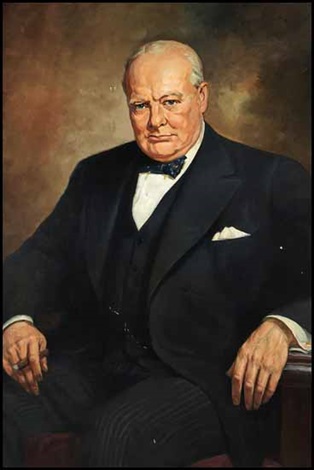

He gifted the Fairmont the original print from the original negative of Churchill, along with 15 other pieces of his work.Īfter Karsh closed his studio in 1992, Fielder told The Times, all of his negatives were given to Library and Archives Canada. Karsh, who died in 2002, lived in the hotel with his wife for nearly two decades, and considered it home. Since then, according to a CTV News interview with Dumas, members of the public have sent in photographs of themselves in front of the famous image, which has allowed the police to pinpoint when the photograph was taken-sometime between Dec. In the days after the discovery, the Fairmont has asked the public to share any information with the local authorities. “We are deeply saddened by this brazen act,” Geneviève Dumas, the hotel’s general manager, told The Times. In a news release on Tuesday, the Fairmont hotel stated that local authorities had been notified of the picture’s disappearance, and, as a precautionary measure, “the remaining photographs located in the Reading Lounge have been removed until they can be secured properly,” the hotel said.

“It was a fake.” Facing the other side of the camera for a change, celebrated portrait photographer Yousuf Karsh is captured on film next to his famous image of Sir Winston Churchill during the preview of his 80th birthday exhibition at London’s Barbican Art Gallery. So it took me just one second to know that someone had tried to copy it,” Fielder told the Guardian. So the hotel contacted Jerry Fielder, the overseer of Karsh’s estate. On August 19, The New York Times reports, an employee of the hotel was making their rounds when they noticed the frame was askew and did match the others on the wall. Since 1998 the original print, shot by renowned photographer Yousuf Karsh, has hung on the hotel wall of Fairmont Château Laurier, in the Canadian capital of Ottawa. One hand on hip, the other grasping the back of a chair, his scowling face half shrouded in darkness. It is one of the most iconic and reproduced portraits of Britain’s wartime PM, Winston Churchill. It was at that instant that I took the photograph.Who Stole This Iconic Portrait of Winston Churchill? Close By the time I got back to my camera, he looked so belligerent he could have devoured me. Then I stepped toward him and, without premeditation, but ever so respectfully, I said, ‘Forgive me, sir,’ and plucked the cigar out of his mouth. I waited he continued to chomp vigorously at his cigar. I went back to my camera and made sure that everything was all right technically. I held out an ashtray, but he would not dispose of it. ‘You may take one.’ Churchill’s cigar was ever present. Churchill lit a fresh cigar, puffed at it with a mischievous air, and then magnanimously relented. I timorously stepped forward and said, ‘Sir, I hope I will be fortunate enough to make a portrait worthy of this historic occasion.’ He glanced at me and demanded, ‘Why was I not told?’ When his entourage began to laugh, this hardly helped matters for me. I switched on my floodlights a surprised Churchill growled, ‘What’s this, what’s this?’ No one had the courage to explain. The Prime Minister, arm-in-arm with Churchill and followed by his entourage, started to lead him into the room. After the electrifying speech, I waited in the Speaker’s Chamber where, the evening before, I had set up my lights and camera. The Prime Minister, Mackenzie King, invited me to be present. In 1941, Churchill visited first Washington and then Ottawa. I knew after I had taken it that it was an important picture, but I could hardly have dreamed that it would become one of the most widely reproduced images in the history of photography. “My portrait of Winston Churchill changed my life.


 0 kommentar(er)
0 kommentar(er)
